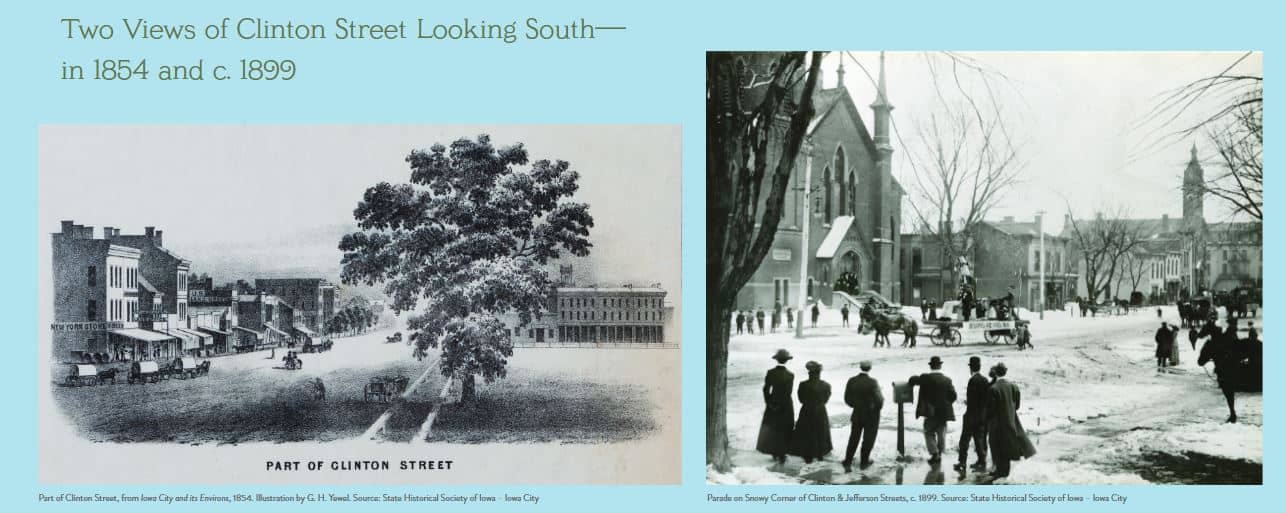
Each object in the cases is marked with a corresponding number unless otherwise noted.
Reproduced on panel:
Part of Clinton Street, from Iowa City and its Environs, 1854 Illustration by G. H. Yewell
State Historical Society of Iowa – Iowa City
Note the horse-drawn covered wagons and the U.S. Land Office which administered the sale of public lands to facilitate settlement.
Parade on Snowy Corner of Clinton & Jefferson Streets, ca. 1899
State Historical Society of Iowa – Iowa City
The horse-drawn parade float is passing in front of the Congregational United Church of Christ built in 1869.

Photos courtesy of the State Historical Society of Iowa – Iowa City.
In the case:
1. Businesses, Washington and Clinton Streets, ca. 1860
Reproduction
State Historical Society of Iowa – Iowa City
2. County Fair on Old Capitol grounds, ca. 1854
Reproduction
State Historical Society of Iowa – Iowa City
3. Iowa City Parade Fire Wagon with African American Coachman on Clinton Street, 1893
Reproduction
State Historical Society of Iowa – Iowa City
The African American coachman driving this ladder wagon was one of the very few people of color—less than 1% of the population—working in Iowa c. 1900. Many worked not in agriculture, but in cities and towns of 1,000 or more. The occupational category in the non-agricultural horse industry from which most men, both “White” and “Colored,” worked their way to coachman consisted of “Draymen, Horsemen, Teamsters, Etc.” Draymen were single-horse carters, horsemen were grooms and hostlers or stable workers, and teamsters were drivers of two or more horses pulling wagons.
The African American coachman was a relatively conspicuous figure in this period, as several drove carriages for presidents in Washington, D.C., including Albert Hawkins who drove Ulysses S. Grant, Rutherford B. Hayes, James A. Garfield, Chester A. Arthur, and Grover Cleveland; William Willis who drove for Cleveland and Benjamin Harrison; and Charlie Lee who became Theodore Roosevelt’s coachman for thirty years spanning both his years in office and retirement to New York State. The job carried certain prestige and provided a good livelihood. At the same time, it made the coachman a highly visible servant of the carriage owner, whether the U.S. President, a wealthy private citizen, or the local fire company. In all cases, success in the position demanded keen knowledge of the horses and a high level of skill at the reins.
